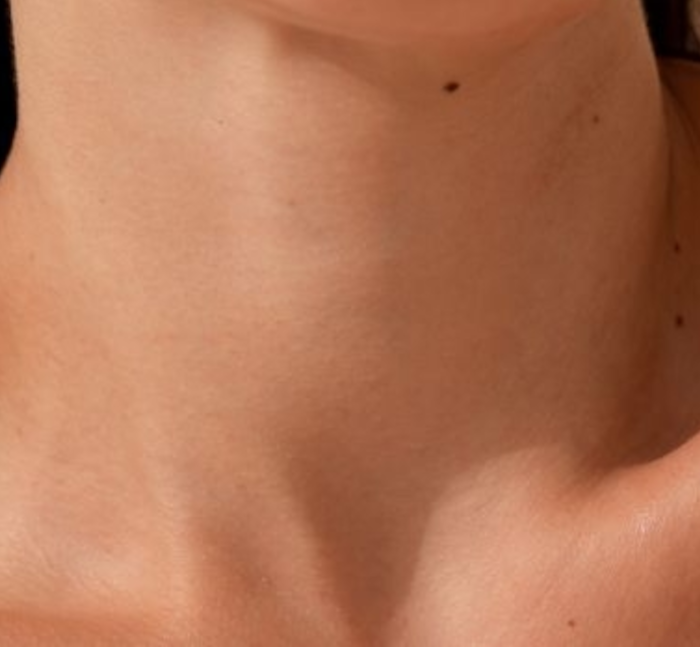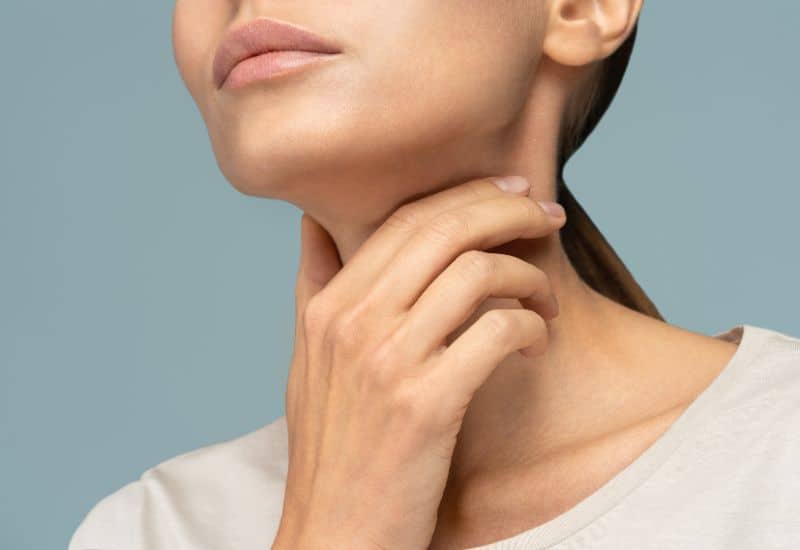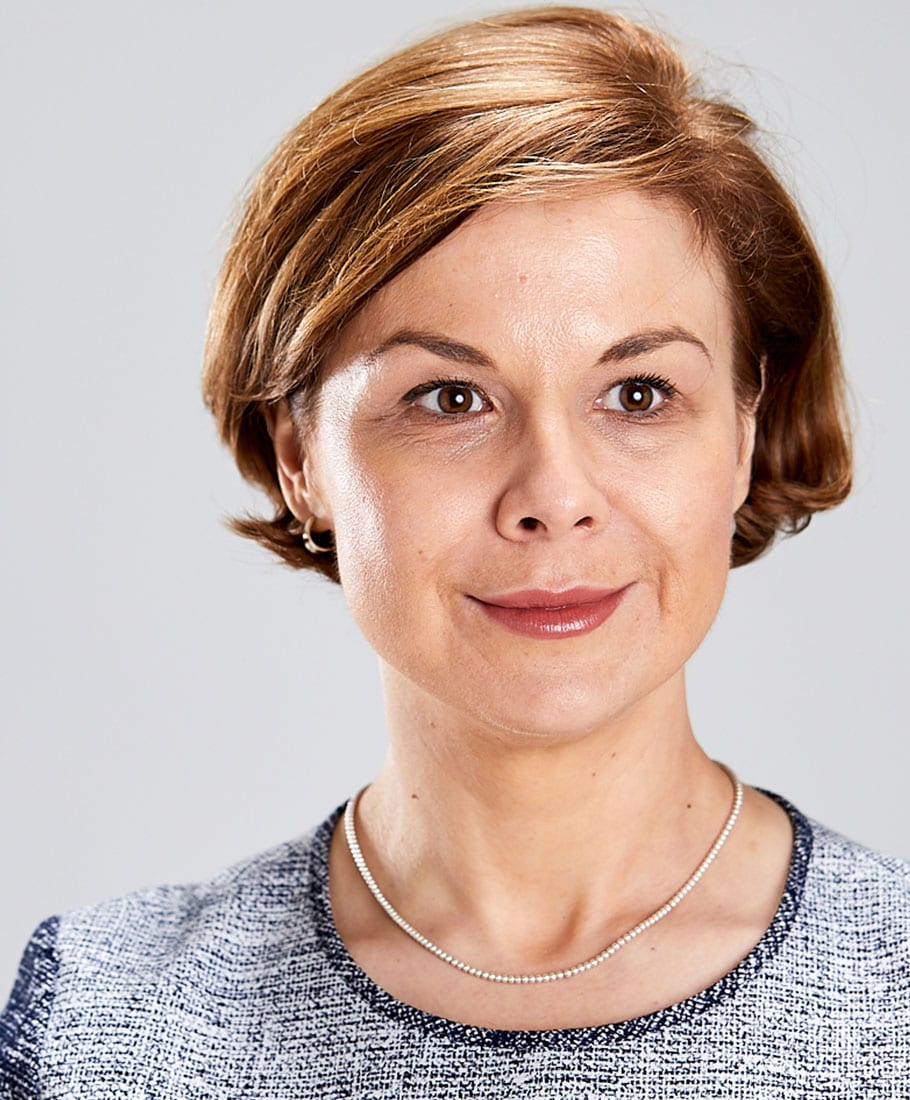Procedures
BCC Skin Cancer Surgery

BCC, or Basal Cell Carcinoma, is a common type of skin cancer. It’s often the result of long-term exposure to the sun, particularly intense exposure experienced during childhood. It is typically found on the face and neck, but it can develop anywhere on your body.
This type of cancer develops in the basal cells, the deepest layer of the skin. Unlike other forms of skin cancer, BCC rarely spreads to other parts of the body, making it less likely to be life-threatening. But don’t underestimate it; if left untreated, it can grow deep beneath the skin into the underlying tissue and bone, causing significant damage and disfigurement.
Anca Breahna is a highly respected and experienced plastic surgeon with an outstanding track record in the treatment of skin cancer.
At a glance
Local Anaesthesia
A few days
Table of Contents
What is BCC Skin Cancer Surgery?
BCC Skin Cancer Surgery refers to the surgical removal of Basal Cell Carcinomas. The purpose is to remove the entire tumour, ensuring that all cancerous cells are eradicated while minimising damage to the surrounding healthy tissue. This is particularly important for BCCs found on the face, as you would want to minimise scarring and maintain as much normal function as possible.
The exact technique used for BCC Skin Cancer Surgery may vary depending on several factors, including the size and location of the tumour and whether the cancer has recurred following previous treatments.

Who Needs BCC Skin Cancer Surgery?
If you’re diagnosed with BCC, surgery will likely be recommended as your primary treatment. That’s because surgical techniques have a high success rate in removing BCCs and reducing the chance of recurrence. You’re a suitable candidate for surgery if:
- Diagnosis of BCC: The first and most obvious factor is the confirmed diagnosis of Basal Cell Carcinoma. A biopsy – where a small sample of the suspicious skin is taken and examined under a microscope – is usually performed to confirm the diagnosis. The findings from the biopsy can also provide information about the subtype of BCC and the depth of the cancer, both of which can impact the decision on whether to proceed with surgery
- Location and size of the tumour: The exact location and size of the tumour can influence the decision for surgery. BCCs that are small and located in less cosmetically sensitive areas, such as the trunk, are usually straightforward to treat with surgery. Larger tumours, or those in cosmetically sensitive areas like the face or near the eyes, might also be treated with surgery, but a technique that minimises damage to surrounding tissue, such as Mohs surgery, might be preferred
- General health of the patient: Surgery, even minor procedures, always carries some risk. If you have certain health conditions, such as heart disease or diabetes, or if you’re older, these risks might be increased. Anca will take your overall health into consideration when deciding whether surgery is the best option for you
- Previous treatments: If you’ve already had treatment for BCC and it’s come back, surgery might still be an option, but a more careful approach is usually required to ensure all the cancer is removed. The type of previous treatment you’ve had, and how long ago you had it, can influence the decision on whether to proceed with surgery
- Patient preference: Lastly, your own feelings about surgery are important. You might prefer to avoid surgery due to the potential for scarring, or you might be anxious about the procedure. Anca will discuss all treatment options with you, including the risks and benefits, to help you make an informed decision
It’s worth mentioning that older individuals and those with certain health conditions may face increased risks during surgery.
Benefits of BCC Skin Cancer Surgery
Surgery to treat BCC comes with many benefits. Here are some of them:
- High success rate: Surgical removal of BCCs has a high success rate, with many studies indicating a cure rate close to 95% when performed correctly
- Reduced risk of recurrence: Complete removal of the tumour reduces the chance of the cancer returning in the same spot
- Preservation of healthy tissue: Modern surgical techniques aim to remove the cancer while causing minimal damage to the surrounding healthy skin
- Immediate results: Once the surgery is performed, the cancerous cells are immediately removed from your body
The exact benefits you experience may depend on the specific type of BCC you have and the surgery method used.
Types of BCC Skin Cancer Surgery Procedures
Excisional Surgery
This traditional surgery involves cutting out the tumour along with a margin of healthy skin around it to ensure all cancerous cells are removed. The wound is then stitched up
Mohs Surgery
This technique involves removing the tumour layer by layer. Each layer is checked under a microscope for cancer cells until no more are found. This method is used as it preserves as much healthy tissue as possible and is particularly useful for BCCs that are large, recurring, or located in cosmetically sensitive areas like the face
Curettage and Electrodessication
This procedure involves scraping away the cancerous growth with a curette (a long, thin instrument with a looped end), then using an electric needle to destroy any remaining cancer cells and minimise bleeding
Cryosurgery
The cancerous cells are frozen and destroyed with liquid nitrogen. This method is generally less invasive but may have a slightly higher chance of the cancer returning

How is BCC Skin Cancer Surgery Performed?
Performing BCC Skin Cancer Surgery involves several critical steps and can vary depending on the specific type of surgery being used. The following sections break down the process into detailed steps for better understanding.
- Preparation: Before the surgery, Anca will mark out the area to be treated, and local anaesthetic will be administered to numb the area. This means you’ll be awake during the procedure, but you won’t feel any pain
- Excisional Surgery: If Anca is performing an excisional surgery, she will cut out the visible BCC along with a border of healthy skin. This is to ensure that all cancer cells, even those that might have spread into the surrounding skin, are removed. The size of the border of healthy skin removed depends on the size and location of the BCC. The wound is then closed with stitches, and a dressing is applied. In some cases, if the BCC is large, your plastic surgeon might not be able to close the wound directly with stitches. In this scenario, a skin graft or skin flap (where skin from another part of the body is used) might be needed to cover the wound and help it heal
- Mohs Surgery: For Mohs surgery, the process is slightly different. Anca removes a thin layer of skin containing the tumour and then examines it under a microscope. If cancer cells are detected at the edges of the skin sample, your plastic surgeon will remove and examine another layer of skin. This is repeated until no more cancer cells are detected. The aim is to ensure all the cancer is removed while taking away as little healthy skin as possible
- Curettage and Electrodessication: In this procedure, your plastic surgeon uses a curette, a tool designed to scrape away the cancerous skin. After the visible cancer is removed, an electric needle (electrode) is used to treat the area and kill any remaining cancer cells. This process may be repeated a few times to make sure all the cancer is removed
- Cryosurgery: This procedure uses liquid nitrogen to freeze and kill the cancer cells. Your plastic surgeon applies the liquid nitrogen directly onto the skin, which causes the area to scab over. When the scab falls off, new, healthy skin appears underneath
There are different types of surgical procedures to treat BCC. The one chosen for you will depend on the size, depth, and location of the carcinoma, as well as your overall health and personal preferences. Each type of surgery has its own pros and cons. The most suitable one for you will depend on factors that you will discuss with Anca during the consultation.
Recovery after BCC Skin Cancer Surgery
The recovery process following BCC Skin Cancer Surgery largely depends on the type of procedure performed and the individual’s overall health. Here’s what you might generally expect:
- After the surgery: Once the procedure is complete, you’ll likely have a wound dressing in place. The medical team will provide you with instructions on how to care for the wound and when to return for a follow-up appointment
- Pain Management: Some discomfort is expected after the surgery, although this is usually manageable with over-the-counter pain relief medication. Any pain should start to subside within a few days
- Wound Care: You’ll need to keep the area clean and dry to prevent infection. Your medical team will provide detailed instructions on cleaning the wound, changing dressings, and signs of infection to watch out for, such as redness, swelling, or a foul-smelling discharge
- Rest and Resume Activity: Most individuals can resume normal activities within a day or two after surgery, but strenuous activity, heavy lifting, and swimming should be avoided until the wound has fully healed
- Follow-Up Appointments: You will have follow-up appointments to monitor your recovery and check for signs of the cancer returning. If the cancer was extensive, your plastic surgeon might refer you to a specialist for additional treatment
Reviews
Patient satisfaction is the top priority for Anca. You can find how patients feel about her work below.Miss Breahna removed a cancerous nodule from my forehead in March 2021. I was quite nervous when I arrived at the hospital, but when I was greeted by a member of her team I started to feel calmer as they were so professional and friendly.Once inside the theatre Miss Breahna and her team helped me to feel relaxed and comfortable throughout, the team atmosphere was friendly and upbeat during my operation and I was looked after wonderfully. I would recommend Miss Breahna and her team to anyone requiring this type of surgery.Kate Hodson

Ms Anca Breahna was most kind and empathetic during my recent procedure for skin cancer. She reassured me that I’m now completely clear, I have total confidence in her and would recommend her unreservedly. Thank you Anca.

Wish I’d Done It Sooner! I am so pleased with the results
After searching and deliberating for a long time, I consulted Anca regarding the removal of 3 lipomas. From start to finish, she was fantastic! One of the lipomas was on my forehead and I have to search for the scar! I am so pleased with the results of all and the one regret is that I didn’t find her sooner. I wouldn’t hesitate to recommend her
Further Reading
- Read Anca’s Blog on What Does Skin Cancer Look Like?
- Read Anca’s Blog on Looking for Skin Cancer Treatment near Chester?
- Read Anca’s Blog on Skin Cancer & Mole Surgery At Chester Cosmetic Surgery

Procedure
Frequently asked questions
How successful is BCC Skin Cancer Surgery?
BCC Skin Cancer Surgery is generally very successful. Depending on the specific type of procedure used, the cure rates can be as high as 95% to 99%. However, it’s important to have regular follow-up appointments to check for any signs of the cancer returning or new skin cancers developing.
Will I be left with a scar after BCC Skin Cancer Surgery?
Yes, any type of skin surgery will leave a scar. However, Anca will use techniques to minimise the scar and make it less noticeable. Over time, the scar will also fade, although it won’t disappear completely. If scarring is a significant concern for you, discuss this with your plastic surgeon before the procedure.
What are the alternatives to surgery for treating BCC?
There are several alternatives to surgery for treating BCC, although surgery is generally the most effective treatment. Other options might include topical treatments (creams), radiation therapy, photodynamic therapy, or oral medications. The best treatment for you will depend on the size and location of the BCC, your overall health, and your personal preferences.
What happens if my BCC is not treated?
If left untreated, BCC can continue to grow and invade the surrounding skin and tissues. While BCC rarely spreads (metastasises) to other parts of the body, it can cause significant local damage and disfigurement. Early detection and treatment are key to preventing such complications.
How can I reduce my risk of getting BCC?
The main risk factor for developing BCC is exposure to ultraviolet (UV) radiation from the sun or tanning beds. To reduce your risk, it’s important to protect your skin from the sun. This includes seeking shade when the sun’s rays are strongest, wearing protective clothing, and using a broad-spectrum sunscreen with an SPF of 30 or higher. Regular skin checks can also help detect any new or changing skin growths early.
What are the risks of BCC Skin Cancer Surgery
While BCC Skin Cancer Surgery is generally considered safe and effective, as with any surgical procedure, there are potential risks involved. These might include:
- Bleeding: Although rare, there’s a small risk of significant bleeding during or after the procedure
- Infection: Any surgical wound can potentially become infected. You’ll be given advice on how to reduce this risk and what symptoms to look out for
- Scarring: Any form of skin surgery leaves a scar. However, techniques are used to minimise this as much as possible. If a large area of skin is removed, skin grafting may be necessary to help with healing and minimise scarring
- Recurrence of Cancer: There’s always a risk that some cancer cells might be missed, and the cancer could return. Regular follow-up appointments are key in early detection of any new or recurring cancers
- Nerve damage: If the carcinoma is located near nerves, there’s a small risk of nerve damage during surgery. This can lead to numbness or changes in sensation in the surrounding skin
Medical References about BCC Skin Cancer
- Basal Cell Carcinoma – Mayo Clinic
- Mohs Surgery – Cleveland Clinic
- Treatment – Skin cancer (non-melanoma) – NHS
- Skin Cancer Types: Basal Cell Carcinoma Diagnosis and Treatment – American Academy of Dermatology
- Basal Cell Carcinoma: Causes, Symptoms & Treatment – Cleveland Clinic






